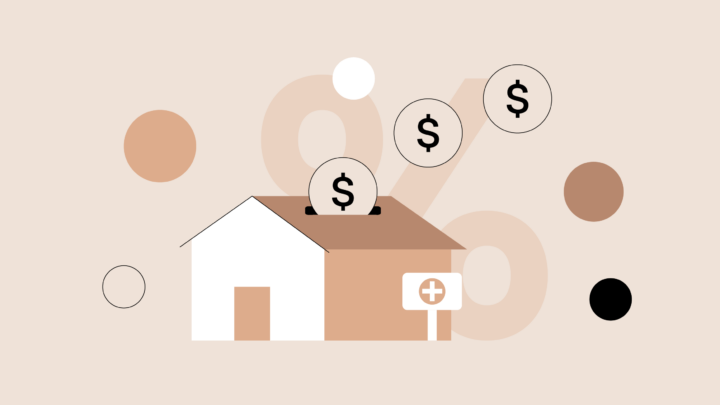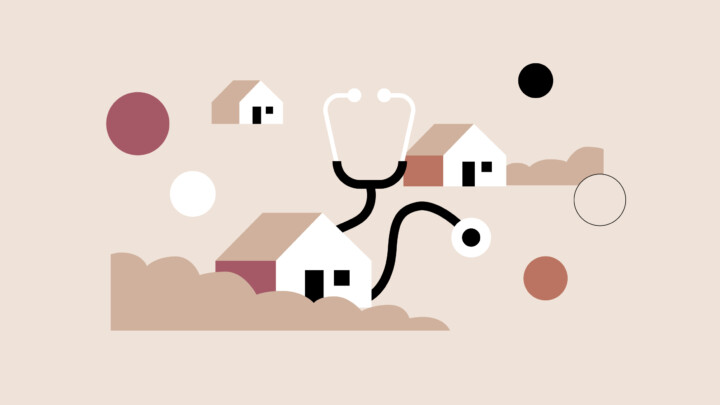
Sermo asked its community of global physicians, “Do you feel confident in your understanding of the various loan options available for physicians?” Only half (51%) said yes.
One Sermo member wrote, “I have never taken out a physician loan but know others who it has been helpful for!” While for others who lack financial literacy, loans may cause more damage than good.
In this article, we’ll detail loans for physicians, including types, benefits, key considerations and a step-by-step plan for securing one.
This blog is for educational purposes only. Consult a licensed financial professional for personalized advice.
Understanding loans for doctors
Physicians hold distinct views of debt. One anesthesiologist wrote on Sermo, asserting that loans are “certainly part of the financial trap that docs can get into if not careful.” Others praise their utility.
Most agree that you shouldn’t take on a financial obligation that you don’t understand fully. Let’s first consider what a physician loan is, and how it differs from conventional personal loans.
What is a physician loan?
If you’re wondering what a physician loan is, it refers to specialized financial products tailored to doctors’ unique financial barriers. Lenders typically cater these loans to medical professionals with low funds, limited credit, pending employment or a high debt-to-income ratio.
What are personal loans?
A personal loan is generally an unsecured financial product—meaning it does not require collateral—that lenders can use for various personal purposes. Institutions commonly target specialized personal loan products to physicians, and many don’t require borrowers to disclose the loan’s purpose.
About 10% of Sermo’s surveyed community report having taken out a personal loan.
“Physicians basically lose 4-10 years of their ‘young’ lives and earning power due to med school and then residencies—in the case of people going into general surgery, no income until age 30,” one Sermo member wrote. Most commonly, personal loans for physicians help cover short-term cash flow needs.

3 types of Loans for Physicians: What are the options tailored to doctors?
Physician mortgage loans, practice loans and business lines of credit are three common financial products.
1. Physician mortgage loans
Physician mortgage loans are the most established doctor-specific loan product—11% of Sermo’s community report having one.
They allow physicians to reduce their down payment without paying private mortgage insurance (PMI), but in exchange for a lower down payment and the lender waiving PMI, borrowers may incur extra costs. These costs often appear as higher interest rates or increased fees.
Although physician mortgage loans offer favorable terms, closing costs still apply. Additionally, certain institutions offer physician HELOC loans under similarly favorable provisions.
2. Practice loans
About 9% of Sermo’s community report having taken out a practice loan. These loans provide funding for starting, expanding or acquiring a practice. Term and Small Business Administration (SBA) loans are common types.
Term loans
Financial institutions offer term loans in return for repayment of principal plus interest over a set period. Term loans offer a fixed or variable interest rate with predictable repayment schedules. Many are also unsecured. Lenders commonly offer specialized term loans that offer favorable terms for expansions, acquisitions and large-scale equipment purchases.
One Sermo member and ophthalmologist adds, “Try and get a fixed low rate… The faster you can pay it off the less interest you will owe.”
SBA loans
Financial institutions issue SBA loans, requiring borrowers to repay principal and interest over a set period. These loans typically feature fixed or variable interest rates and predictable repayment schedules. Institutions generally require collateral for SBA 7(a) loans exceeding $50,000.
Lenders commonly offer specialized term loans with favorable provisions for expansions, acquisitions, large-scale medical equipment purchases and other needs. The SBA offers three primary loan programs: SBA 7(a), SBA 504 and SBA Microloan.
Physicians often choose SBA 7(a) loans, which provide:
- Flexibility: Physicians can use SBA 7(a) funds for a wide range of expenses, including partner buyouts, medical equipment purchases, and startup operating costs.
- Substantial loan amounts: Lenders commonly offer up to $5 million.
- Extended repayment terms: Depending on the agreement, repayment terms can extend up to 25 years.
- Modest down payment requirements: The 7(a) program does not mandate a fixed down payment. However, lenders may require equity—typically a percentage of the loan. This is generally lower than the equity requirements of many conventional loans.
The caveat is that SBA 7(a) loans for physicians often entail lengthy approval processes and extensive documentation, require personal guarantees and involve complex loan structures. Moreover, they may impose strict underwriting criteria and industry-specific eligibility conditions.
An internal medicine physician shares on Sermo, “My first loan was a physician loan when I was on residency. I couldn’t afford the down payment, and interest wasn’t terribly high at the time. Now, with interest high at baseline, the physician loan seems less attractive.”
3. Business line of credit
Business lines of credit for physicians function similarly to those offered to professionals in other fields. They provide physicians with an approved limit to draw from as needed, rather than issuing a lump sum.
Borrowers repay drawn amounts on a set schedule, often monthly. As they reduce the outstanding balance, they regain access to credit. Each repayment replenishes the credit limit, and interest applies only to the remaining balance. These lines commonly carry variable rates tied to market benchmarks. Unlike term loans, lines of credit offer flexible, on-demand funding for short-term needs.
A Sermo OB/GYN shares, “I took out a student loan, and a line of credit in starting my practice. Those have been long paid off, and have not taken out other loans since.”

Key benefits of medical doctor loans
Sermo asked its community of physicians, “What factors influenced your decision to choose a physician loan over conventional loan options?” Here are their responses:
- Low or no down payment requirement: 17%
- No private mortgage insurance (PMI): 8%
- More flexible debt-to-income (DTI) requirements: 9%
- Higher loan approval odds despite student debt: 6%
- Competitive or lower interest rates: 14%
- Recommendations from colleagues, lenders or financial advisors: 6%
- Limited savings at the time of purchase: 7%
One Sermo member and pathologist wrote, “Physician loans offer benefits like low or no down payment requirements and the ability to qualify with high student loan debt, which is often a barrier in traditional loans. Additionally, these loans typically don’t require private mortgage insurance (PMI), making them more affordable for doctors early in their careers.”
How to secure a loan as a physician: Step-by-step
While processes vary by loan type, most financial institutions follow a similar structure:
- Identify appropriate institutions: Research financial institutions offering physician-specific loans. Compare physician loans’ interest rates, terms and eligibility requirements to determine the most suitable option.
- Review and apply: Gather all required paperwork. Complete the application with accurate personal and financial details and attach any supporting documents. If there are any additional requests during underwriting, respond promptly and thoroughly.
- Finalize the loan: Sign the final loan documents after agreeing to the terms, or fulfill any remaining requirements. The lender disburses funds once all conditions are met.
Important considerations for physician loans
Many physicians benefit from the provisional advantages of physician loans. But, these provisions commonly involve trade-offs that vary by loan type. Such trade-offs may include high interest rates, restrictions to primary residences or specific property types and a risk of overextension or negative equity if home values decline.
Approach all loans with discretion. If you require one, seek the advice of a local financial professional. “Avoid loans if possible. They add to stress. As if we don’t have enough already. My perception is that med school in the US is the most expensive. Adjusting lifestyle is important—do we need the expensive house, car, vacations?” one Sermo member and psychiatrist writes.
Mirroring this, another noted, “I really struggle with these kinds of decisions due to my poor legal training. I’m also very conservative when it comes to debt. I’d need to do more research on this with lawyers and financial specialists.”
Gain insights from your peers on Sermo
One Sermo member and psychiatrist posts this sound advice: “I would seek financial advice from a qualified accountant and a qualified financial advisor to help me better understand the risks, benefits and implications.”
All financial decisions carry significant weight. That’s why it’s helpful to learn from the experiences of your peers. As one GP puts it, “The Sermo network provides the opportunity for clinicians around the world to meet and share ideas relating to medicine. Ask about an interesting case, debate current practice and discuss treatment strategies. Create a profile and log on to interact with other health professionals from around the globe.”
Join the Sermo community today.















